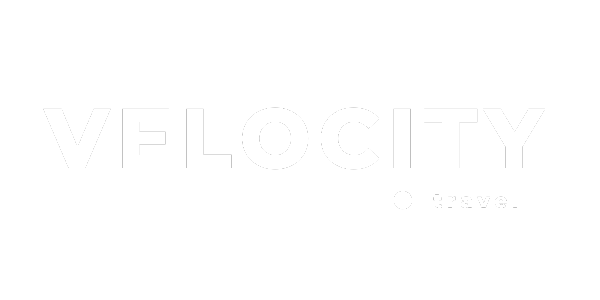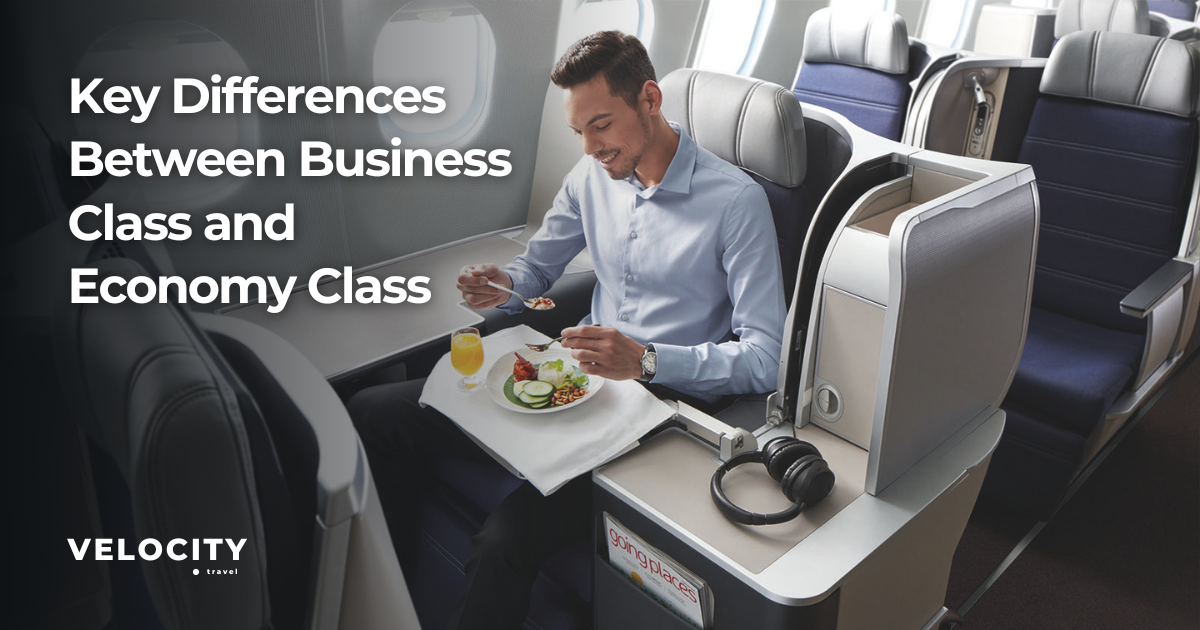Choosing the right flight class is crucial for optimising corporate travel expenses and ensuring employee comfort. With business travel costs averaging over $1,000 per trip domestically and often exceeding $3,000 for international flights, understanding the difference between business class and economy class is essential for companies looking to balance quality with budget constraints.
Table of Contents
ToggleBusiness class provides premium services such as spacious seating, gourmet meals, and priority boarding, making it ideal for long-haul flights or important meetings. On the other hand, the economy class offers a more economical option for budget-conscious travellers while still delivering essential services. As organisations seek effective strategies on how to reduce travel costs in a business, knowing when to choose each class can lead to significant savings without compromising the travel experience.
This article will delve into the key distinctions between business class and economy class, helping you determine which option best aligns with your corporate travel needs. Whether planning a short domestic trip or an extensive international journey, understanding these differences will enable you to make informed decisions that support your company’s travel objectives.
Overview of Travel Classes
Airlines categorise their seating into various classes, primarily economy and business. Each class caters to different needs and budgets, impacting the overall travel experience.
- Economy Class: This is the most affordable option, designed for budget-conscious travellers. It typically offers basic amenities and limited comfort.
- Business Class: Aimed at professionals who require enhanced comfort and services, business class provides a more luxurious travel experience.
Key Differences Between Business Class and Economy Class
Understanding these differences is essential for making strategic decisions that align with corporate travel policies and financial goals.
-
Seating Comfort
Economy Class:
- Seats generally range from 16 to 19 inches in width with a pitch of 29 to 34 inches.
- Designed primarily for capacity rather than comfort, resulting in limited legroom.
Business Class:
- Seats are wider (often up to 21 inches) and provide significantly more legroom.
- Many airlines offer lie-flat beds on long-haul flights, enhancing rest and productivity during travel.
-
Amenities Offered
Economy Class:
- Passengers receive basic meal options, often limited to a single-tray service.
- Entertainment systems may be available but are usually less advanced than those in business class.
Business Class:
- Offers multi-course meals with gourmet options and premium beverages.
- Enhanced entertainment systems with larger screens and more content choices.
-
Check-in and Boarding Process
| Feature | Economy Class | Business Class |
| Check-in Process | Standard check-in | Priority check-in |
| Boarding Priority | Last to board | First to board |
Economy passengers typically use standard check-in lines, while business class travellers enjoy expedited processes that save valuable time.
-
Baggage Allowance
| Feature | Economy Class | Business Class |
| Baggage Allowance | Typically allows 20-25 kg | Typically allows 30-35 kg |
Baggage policies vary significantly between the two classes, with business class generally allowing more luggage without additional fees.
-
Cost Considerations
The difference between economy and business class pricing can be substantial. Business class fares are generally two to five times higher than economy class fares. However, the additional cost often translates into better services and comfort that can enhance productivity during trips.
Detailed Comparison Table: Economy Vs Business Class
Understanding the difference between business class and economy class is essential for corporate travellers looking to optimise their travel experience while managing costs effectively. Below is a detailed comparison that highlights the key features and amenities associated with each class, enabling businesses to make informed decisions for their travel policies.
| Feature | Economy Class | Business Class |
| Seat Width | 16 – 19 inches | Up to 21 inches |
| Seat Pitch | 29 – 34 inches | 38 – 76 inches (lie-flat options) |
| Reclining Capability | Limited recline (usually 2-4 inches) | Extensive recline; many seats convert to lie-flat beds |
| Amenities | Basic snacks and beverages; limited entertainment options | Multi-course gourmet meals, premium beverages, and advanced entertainment systems |
| Baggage Allowance | Typically allows 20-25 kg | Typically allows 30-35 kg |
| Check-in Process | Standard check-in | Priority check-in |
| Boarding Priority | Last to board | First to board |
| Lounge Access | No lounge access | Access to exclusive airport lounges |
| Cost | Generally lower fare | Two to five times higher than economy class |
| In-flight Service | Minimal service; flight attendants may be less available | Attentive service with dedicated flight attendants |
Key Insights:
- Seating Comfort: The seating arrangement in business class is designed for comfort, featuring wider seats and greater legroom compared to economy class. This is particularly beneficial for long-haul flights, where comfort can significantly impact productivity upon arrival.
- Amenities Offered: Business class passengers enjoy a superior dining experience with multi-course meals and a selection of fine wines. In contrast, economy class typically offers basic meal options, which may not be as satisfying on longer flights.
- Baggage Policies: Business class generally allows for a higher baggage allowance without additional fees, which can be crucial for corporate travellers who may need to carry more equipment or materials.
- Cost Considerations: While business class tickets are significantly more expensive than economy tickets, the added comfort and services can justify the cost, especially for frequent travellers or those on critical business trips.
- Lounge Access: One of the significant advantages of flying business class is access to airport lounges, where travellers can relax or work in a quieter environment before their flights. This can enhance the overall travel experience by providing a comfortable space away from the bustling airport terminals.
The choice between economy and business class ultimately depends on individual needs, company policies, and budget considerations. Understanding the differences between economy and business class can help corporate travellers make informed decisions that align with their travel objectives while effectively managing costs.
Benefits of Choosing Business Class for Corporate Travel
Opting for business class can offer several advantages that enhance the overall travel experience:
- Enhanced Productivity: The added comfort allows travellers to work effectively during flights, making the most of their time.
- Access to Airport Lounges: Business class passengers can relax in lounges equipped with amenities such as Wi-Fi, refreshments, and quiet spaces before their flights.
- Priority Services: Faster check-in processes and priority boarding save valuable time.
Velocity Travel specialises in optimising corporate travel experiences by providing tailored solutions that enhance comfort while managing costs effectively.
When to Choose Economy Class?
While business class offers numerous benefits, there are scenarios where economy class may be more appropriate:
- Short Trips: For brief journeys where comfort is less critical, economy may suffice.
- Budget Constraints: Companies looking to reduce travel costs can benefit from choosing economy tickets.
Understanding how to reduce travel costs in a business context is vital for maintaining profitability without sacrificing employee satisfaction. Velocity Travel can assist in finding the best options that balance cost with quality service.
Making the Right Choice for Your Corporate Trip
When deciding between business and economy class, consider the following factors:
- Purpose of Travel: Important meetings or long-haul flights may warrant business class for added comfort.
- Duration of Flight: Longer flights benefit from the amenities offered in business class.
- Company Travel Policies: Adhering to corporate guidelines is essential when making travel arrangements.
How Velocity.travel Helps in Corporate Trips?
Velocity.travel is dedicated to enhancing corporate travel experiences by providing tailored solutions that prioritise efficiency, cost savings, and traveller satisfaction. Here’s how we assist businesses in optimising their corporate trips:
-
Comprehensive Booking Solutions
Our user-friendly booking platform allows companies to manage all aspects of travel—flights, accommodations, and transportation—in one place. This streamlines the booking process and ensures compliance with corporate travel policies.
-
Cost Savings with Negotiated Rates
Velocity.travel offers exclusive corporate rates and negotiated deals with airlines and hotels, helping businesses effectively reduce travel costs while providing employees with quality options.
-
Personalised Travel Management
We understand that every organisation has unique needs. Our team works closely with clients to create customised itineraries that maximise productivity and align with company objectives.
-
24/7 Support and Traveler Safety
With round-the-clock support, our team is always available to assist travellers with any unexpected changes or issues. We prioritise safety by providing real-time alerts and travel advisories.
-
Streamlined Expense Management
Our advanced expense management tools simplify reporting and reconciliation, allowing businesses to track spending patterns and identify opportunities for cost savings.
By partnering with Velocity.travel, companies can enhance their corporate trips while effectively managing expenses. Our commitment to personalised service and cost-effective solutions makes us the ideal choice for businesses looking to optimise their travel strategies.
Conclusion
Understanding the difference between business class and economy class is essential for corporate travellers aiming to optimise their travel experiences while managing costs effectively. By evaluating factors such as comfort, amenities, and pricing, businesses can make informed decisions that align with their travel policies and budget constraints.
Partnering with Velocity.travel further enhances this process, providing tailored solutions that not only reduce expenses but also ensure a seamless travel experience for employees. As companies continue to seek ways on how to reduce travel costs in a business, leveraging these insights will lead to more efficient and satisfying corporate trips.
FAQs About Economy Class Vs Business Class
What is the difference between business class and economy class?
The difference between business class and economy class primarily lies in comfort, amenities, and pricing. Business class offers wider seats, more legroom, gourmet meals, and priority services, while economy class provides basic seating and meal options at a lower cost.
How much more expensive is business class compared to economy class?
Business class fares can be two to five times higher than those of economy class. This price difference reflects the enhanced services and comfort that come with business class travel.
What amenities can I expect in business class?
In business class, passengers enjoy a range of amenities, including multi-course gourmet meals, premium beverages, access to exclusive airport lounges, priority boarding, and spacious seating that often converts to lie-flat beds on long-haul flights.
Is it worth upgrading to business class for corporate travel?
Upgrading to business class can be worth it for corporate travel, especially for long flights. The added comfort and amenities can enhance productivity and ensure that travellers arrive well-rested for important meetings.
How can companies reduce travel costs in a business context?
Companies can effectively reduce travel costs by evaluating travel policies, negotiating corporate rates with airlines and hotels, utilising travel management services like Velocity.travel, and considering when to book business versus economy tickets based on trip duration and purpose.

